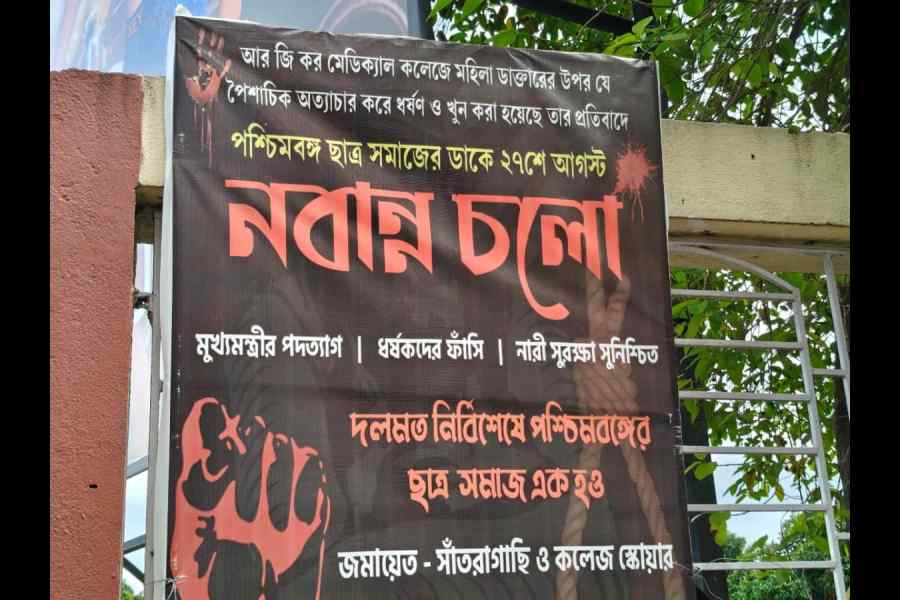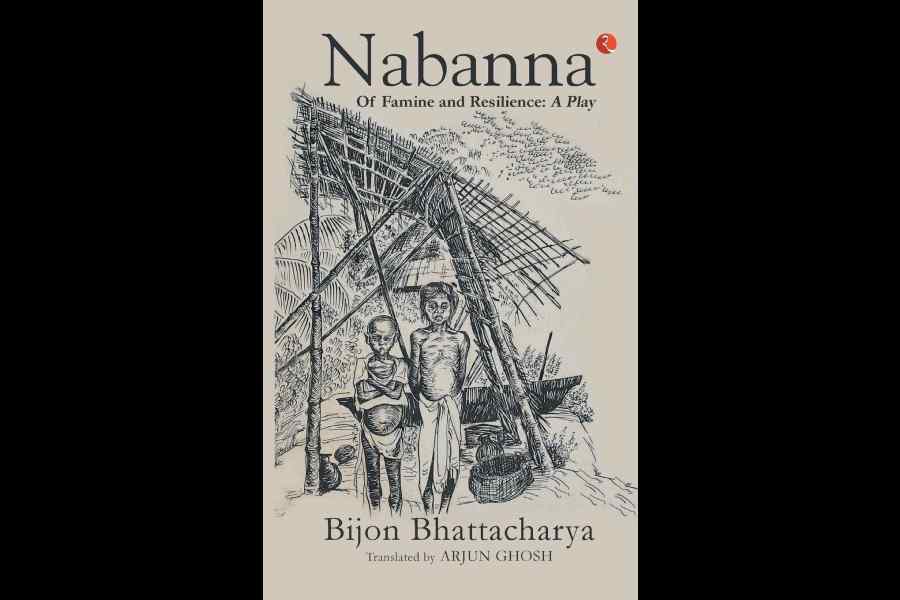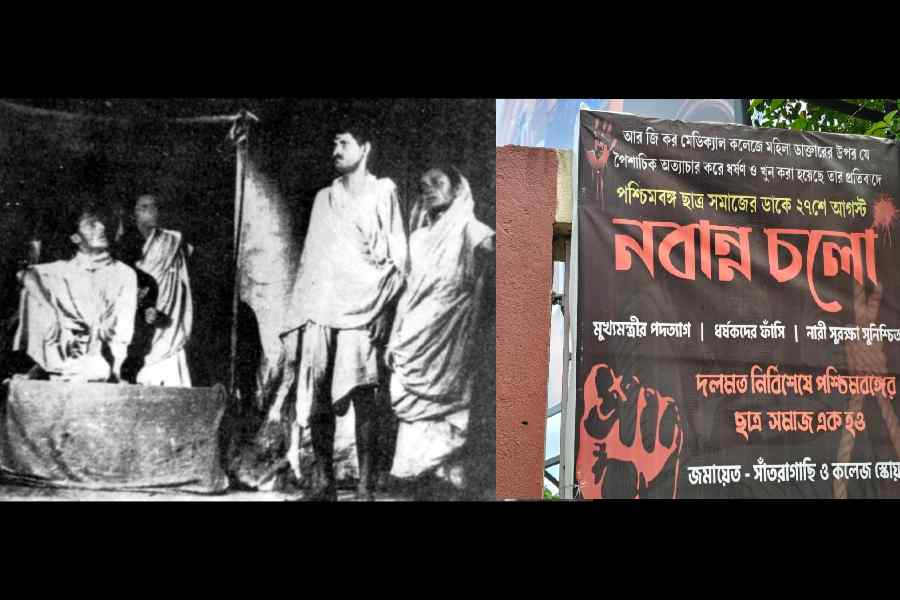A doctor watches his patients die for lack of essential medicines. Hungry migrants are forced to return to their villages. Journalists walk among the starving populace, looking for that perfect picture, promising to tell people their story.
Those are scenes from the iconic Bengali play Nabanna, which was staged by the theatre group Nandikar last month at Calcutta’s Academy of Fine Arts.
Nabanna means new harvest. The play, based on the Bengal famine of 1943, was written by actor-playwright Bijon Bhattacharya. It was first staged in 1944 and directed jointly by Bhattacharya and Sombhu Mitra for the Indian People’s Theatre Association or IPTA, which was founded in the early 1940s, the same that scholar and critic Samik Bandyopadhyay refers to as the “fertile ground for the cultural Left”.
Nabanna was a turning point in Bengali theatre, the signpost that showed the way from commercial theatre to what later came to be known as group theatre.

Jalad Bhattacharyya, Tripti Mitra, Sudhi Pradhan and Shova Sen in bengali drama Nabanna.
“Nabanna was performed at an important juncture both politically and culturally,” Arjun Ghosh tells The Telegraph in an e-mail. Professor in the department of humanities and social sciences at the Indian Institute of Technology, Delhi, Ghosh has authored an annotated English translation of Nabanna, prefaced by a critical essay.
“Politically, the play allowed the Communist Party and other organisations of the Left to respond to the public isolation they faced after declaring an opposition to the Quit India movement in response to the international call to stand against the Fascists,” Ghosh says.
It is a comeback reflected in Calcutta’s streets today, with Left cultural organisations helping organise many of the marches and sit-ins and human chains. It is ganasangeet — songs of the people — that is being sung, songs that are so much a part of the collective consciousness that people have almost forgotten they are of a certain colour, once written with the ambition to change the world. The song Pothe ebar namo sathi... Time to hit the road, my friend, is one such.

Chalo Nabanna poster.
Bhattacharya and Mitra had unlimited ambition — they wanted to show everything from burning fields to starving men fighting dogs for food in the big bad city on their limited budget. They turned the spotlight away from the actor, used a reddish glow to represent fire and clashing bamboos for gunshots, built a minimal, conceptual stage instead of a grand, realistic one and replaced the stars with multiple actors.
“Nabanna brought on stage the ordinary and the poor as fit subjects for theatrical exploration and the language of the everyday as theatrical speech,” writes Ghosh.
At a time when theatre used to be about gods and kings, Nabanna put the common man on stage, common and yet heroic in the refusal to give up.
Again, at a time when parts of the state are pulsating with impassioned demands for justice, the old radical has been resurrected.
“I wasn’t sure how many people would come to see the play, I couldn’t even push them to come under the circumstances,” says Sohini Sengupta of Nandikar. “The current conditions in Calcutta and in our lives… There are young women in Nandikar who come from the suburbs, from Tarakeswar, from Burdwan,” she continues, saying nothing, saying a lot.
The play begins with the Quit India movement of 1942. It shows the scorched earth policy of the British government — burning standing crops, seizing excess foodgrain to ensure that even if the Japanese army managed to invade India it would not have access to food. The speakers in the auditorium hiss and crackle, creating the menacing voice of the fire.

Nabanna is a Bengali language drama written by Bijon Bhattacharya in 1944.
Three acts of the two-odd hours long Nabanna tell a story of despair. The third act ends with the arrest of hoarder/black marketeer Kalidhan Dhara and landgrabber/trafficker Haru Dutta. The two men exchange a look as they are led away. Is it one of alarm or of confidence in jails being unable to restrain the rich? Up in the balcony, one is too far away to tell. But the anticipation in the audience of the police siding with the wrong-doers is palpable. “Way too simplistic,” mutters an elderly lady, clearly unhappy with the policeman shown doing his job.
In the fourth act, Nandikar used three of the original songs that researcher-singer Devajit Bandyopadhyay had recordings of, two in Bhattacharya’s voice.
Bandyopadhyay performs mancha gaan or songs from the stage. He started performing in 1989 but his collection of songs date even farther back. Bhattacharya’s recording must have been made before 1978, he passed away in January that year. One of the songs is part of Bandopadhyay’s repertoire — Apni banchle baaper naam mithya shey boyaan/…Aaj o jodi shikhya na hoy shikhya kobe hobe… Save yourself first is a wrong teaching/… If you still don’t learn today, when will you learn.” The farmers are singing a song of unity as they help each other with the harvest.
Outside, the protesters sing Aar kobe? When?










